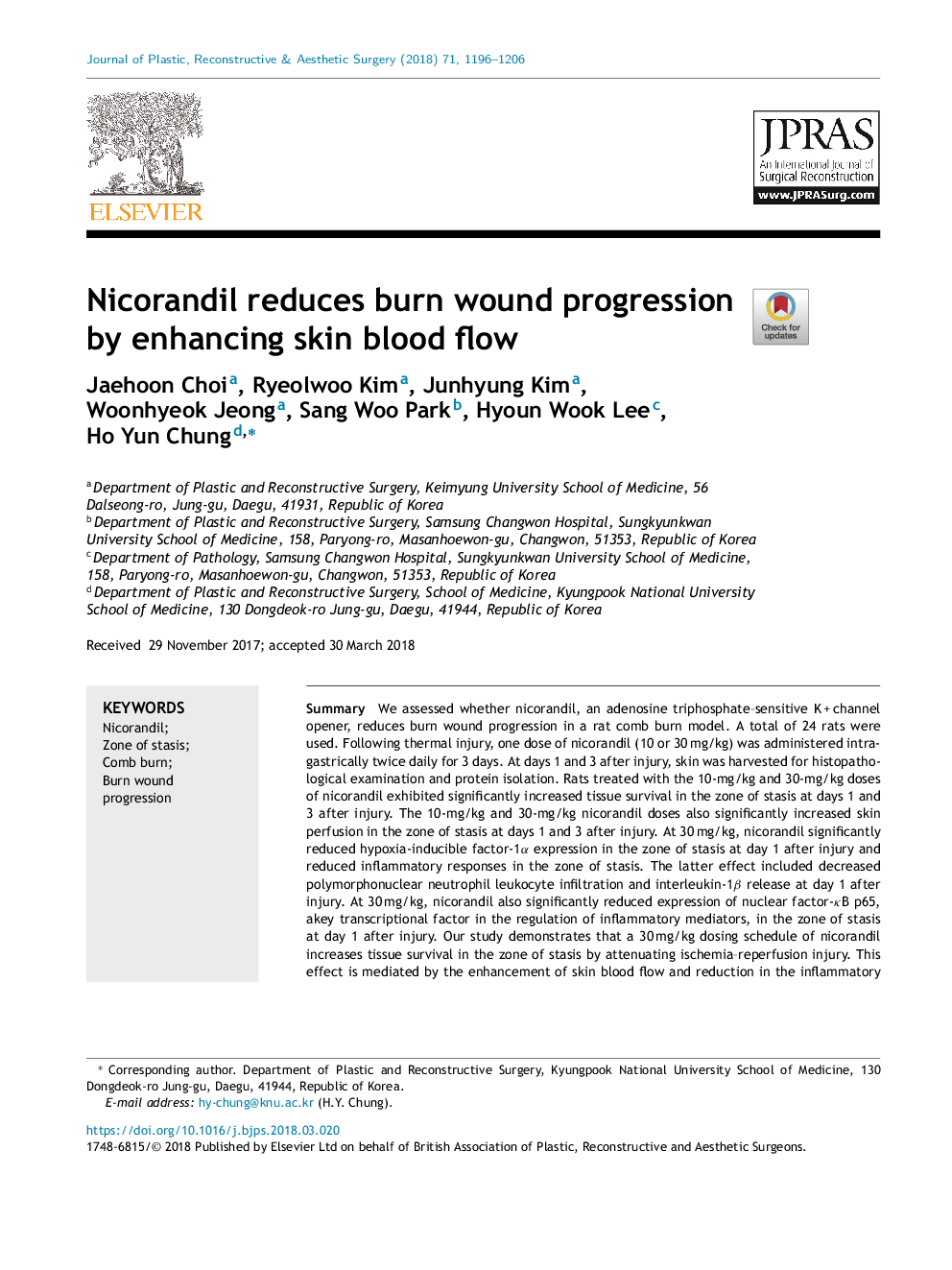| Article ID | Journal | Published Year | Pages | File Type |
|---|---|---|---|---|
| 8806532 | Journal of Plastic, Reconstructive & Aesthetic Surgery | 2018 | 11 Pages |
Abstract
We assessed whether nicorandil, an adenosine triphosphate-sensitive Kâ+âchannel opener, reduces burn wound progression in a rat comb burn model. A total of 24 rats were used. Following thermal injury, one dose of nicorandil (10 or 30âmg/kg) was administered intragastrically twice daily for 3 days. At days 1 and 3 after injury, skin was harvested for histopathological examination and protein isolation. Rats treated with the 10-mg/kg and 30-mg/kg doses of nicorandil exhibited significantly increased tissue survival in the zone of stasis at days 1 and 3 after injury. The 10-mg/kg and 30-mg/kg nicorandil doses also significantly increased skin perfusion in the zone of stasis at days 1 and 3 after injury. At 30âmg/kg, nicorandil significantly reduced hypoxia-inducible factor-1α expression in the zone of stasis at day 1 after injury and reduced inflammatory responses in the zone of stasis. The latter effect included decreased polymorphonuclear neutrophil leukocyte infiltration and interleukin-1β release at day 1 after injury. At 30âmg/kg, nicorandil also significantly reduced expression of nuclear factor-κB p65, akey transcriptional factor in the regulation of inflammatory mediators, in the zone of stasis at day 1 after injury. Our study demonstrates that a 30âmg/kg dosing schedule of nicorandil increases tissue survival in the zone of stasis by attenuating ischemia-reperfusion injury. This effect is mediated by the enhancement of skin blood flow and reduction in the inflammatory response. Therefore, our findings suggest that nicorandil has potential clinical applications for patients with burns.
Keywords
Related Topics
Health Sciences
Medicine and Dentistry
Otorhinolaryngology and Facial Plastic Surgery
Authors
Jaehoon Choi, Ryeolwoo Kim, Junhyung Kim, Woonhyeok Jeong, Sang Woo Park, Hyoun Wook Lee, Ho Yun Chung,
